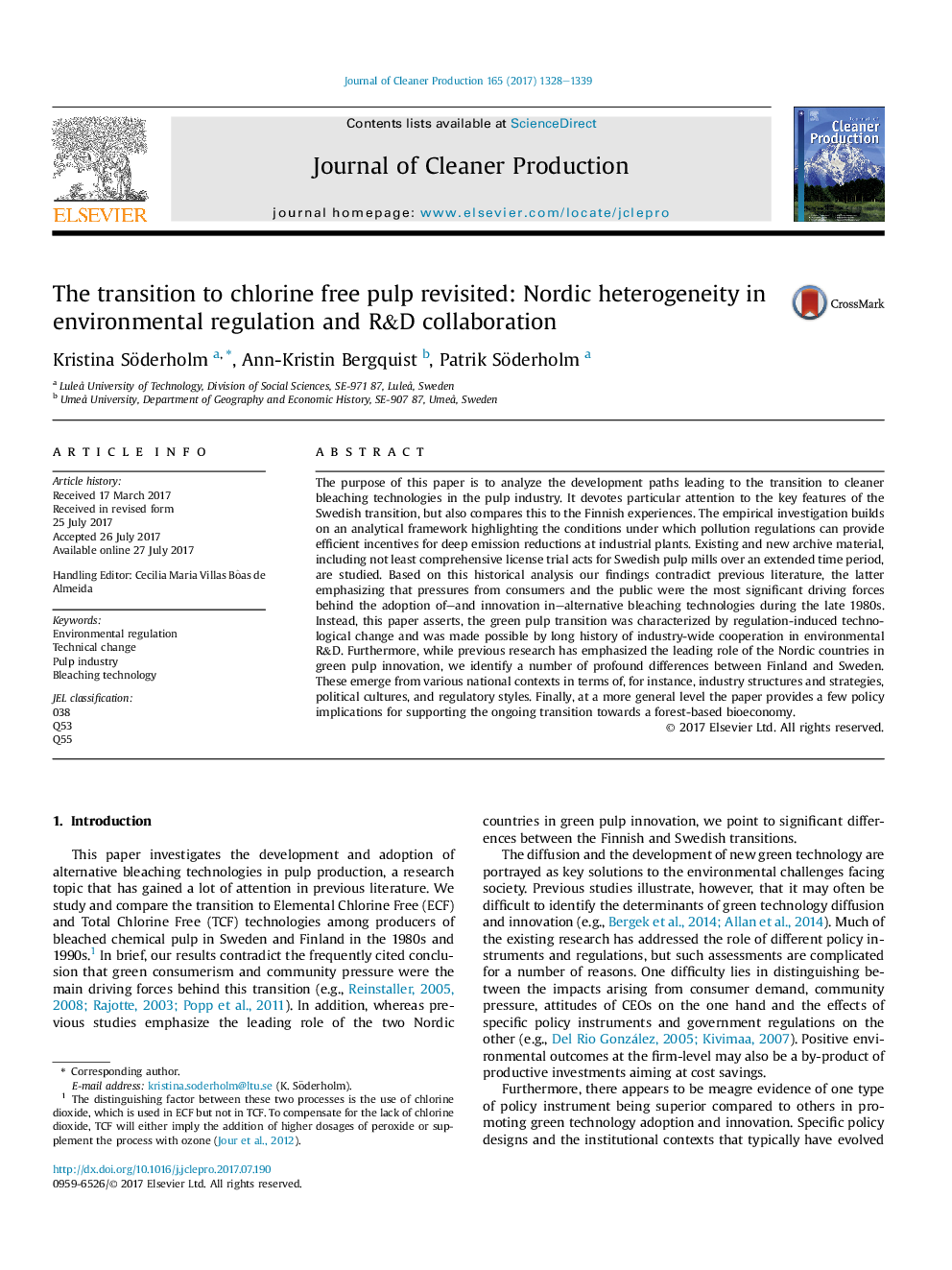ترجمه فارسی عنوان مقاله
انتقال پالپ رایگان کلر: مجدد ناهمگونی نوردیک در تنظیم محیط زیست و همکاری تحقیق و توسعه
عنوان انگلیسی
The transition to chlorine free pulp revisited: Nordic heterogeneity in environmental regulation and R&D collaboration
| کد مقاله | سال انتشار | تعداد صفحات مقاله انگلیسی |
|---|---|---|
| 96487 | 2017 | 12 صفحه PDF |
منبع

Publisher : Elsevier - Science Direct (الزویر - ساینس دایرکت)
Journal : Journal of Cleaner Production, Volume 165, 1 November 2017, Pages 1328-1339

